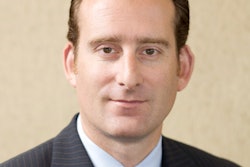
Regular visits to your office allow your patients to consult with an expert to determine if their teeth are healthy, or if there are problems that need attention. Similarly, the retirement plan that you provide for your team members should be reviewed with a pension expert at least once a year to check for any issues.
 Tom Zgainer is CEO of America's Best 401k.
Tom Zgainer is CEO of America's Best 401k.The original plan and strategy you implemented for your employees often diverges from your current individual and corporate goals. Your staff may have experienced significant turnover since your plan was first adopted. Their age demographics may have changed. And by the way, you -- the head of the practice -- are now a year closer to retirement.
However, your practice's evolution may open up new opportunities to design a plan that enables your team and you to save more for retirement.
Give and take
A great reason to go through an annual checkup is to see if there is a better plan option. As you and your team get closer to retirement (generally after age 45), plans such as a profit-sharing plan, a cash-balance plan, or a defined-benefit plan can be paired with a 401(k) to rapidly accelerate contribution objectives.
Every retirement plan requires some give and take. For practice owners, principals, key associates, or partners to take advantage of the opportunity to maximize annual contributions, they need to give eligible employees a proportional amount that passes all the required compliance tests.
“The retirement plan that you provide to your dental team should be reviewed with a pension expert at least once a year.”
These contributions at first blush might not seem to be palatable to you or your practice's bottom line. However, using a long-term vesting schedule -- for example, up to six years -- can help ensure that an employee needs to stay and contribute to earn any one year's contribution. Plus, you receive the tax-deduction benefit of the full amount of employer contributions in the tax year of the contribution, which translates to up to 25% of gross payroll.
Check with your financial and investment professional to see how much you may be eligible to defer into a 401(k) plan. There also may be so-called "catch-up provisions" for those older than 50 for profit-sharing plans. Your financial and investment professional may also offer ways for you to accelerate your contributions, including ideas such as adding a cash-balance or defined-benefit plan to a 401(k). Some options might also reduce your tax liability, but talk with your financial advisor.
An annual meeting with a professional who possesses the expertise necessary to spot excessive and hidden fees within your plan provider's often opaque fee disclosures can help you figure out whether you need to change providers to help you and your employees earn more income for retirement.
Just as you might make an appointment with your physician or certified public accountant, you should consider a retirement plan checkup as well.
Tom Zgainer is the founder and CEO of America's Best 401k. Almost a quarter of the company's clients are dental practice owners.
Disclaimer: The comments in this article are not meant to be taken as financial advice. DrBicuspid.com and America's Best 401K recommend that you always consult with your financial planner before making any significant changes in your financial situation.
The comments and observations expressed herein do not necessarily reflect the opinions of DrBicuspid.com, nor should they be construed as an endorsement or admonishment of any particular idea, vendor, or organization.



















